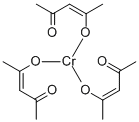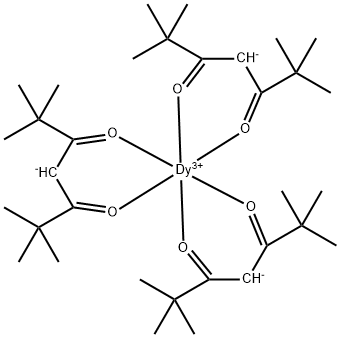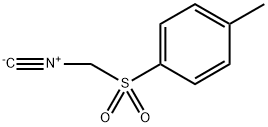Tarragon Oil
- CAS NO.:8016-88-4
- Molecular Weight: 0
- MDL number: MFCD00678517
- Update Date: 2024-12-18 14:15:32
What is Tarragon Oil?
Chemical properties
Tarragon oil (estragon oil) is produced by steam distillation of leaves, stems,
and flowers of Artemisia dracunculus L. (Asteraceae). It is a pale yellow to amber
liquid with a characteristic, spicy, delicate estragon odor reminiscent of licorice
and sweet basil. The following specifications refer to tarragon oil obtained from
plants cultivated in Southern France.
d2020 0.918–0.950; n20D 1.508–1.518; α20D +2 ° to+6 °; acid number: max. 1; saponification
number: max. 18; solubility: 1 vol in ≤ 4 vol of 90% ethanol.
Estragole is the main constituent of tarragon oil (68–84%) and primarily
determines the sensory properties.
Worldwide production of tarragon oil only amounts to a few tons per year.
Important producers are, for example, Hungary, Iran, and France. Tarragon oil is
used mainly in flavor compositions, smaller quantities are employed in perfumery.
Chemical properties
The essential oil is obtained by steam distillation of leaves, stem and flowers of the plant, in yields varying from 0.3 to 1.4%. The oil has a delicate, spicy odor similar to licorice and sweet basil, but characteristic of tarragon oil.
Physical properties
The oil is a pale-yellow to amber liquid. It is soluble in most fixed oils and in an equal volume of mineral oil, occasionally becomes hazy on further dilution. It is relatively insoluble in propylene glycol and is insoluble in glycerin.
Occurrence
Found in the plant Artemesia dracunculus L. (Fam. Compositae).
The Uses of Tarragon Oil
tarragon (Artemisia dracunculus) is said to have tonic and stimulating properties. Its primary active is estragol, a phenol also known as methyl chavicol. other constituents include cymene and phellandrene.
Preparation
By steam distillation of the leaves, stems and flowers of the plant Artemesia dracunculus L.
Definition
Extractives and their physically modified derivatives. Artemisia dracunculus, Compositae.
Essential oil composition
In general, the oil contains a large amount of terpenes, such as pinene, myrcene, anethole (approximately 10%) and up to 60 to 75% estragole (methyl chavicol).
Safety Profile
Moderately toxic by ingestion. A skin irritant. When heated to decomposition it emits acrid smoke and irritating fumes.
Properties of Tarragon Oil
| Boiling point: | 204 °C(lit.) |
| Density | 0.933 g/mL at 25 °C(lit.) |
| refractive index | n |
| FEMA | 2412 | ESTRAGON OIL (ARTEMISIA DRACUNCULUS L.) |
| Flash point: | 175 °F |
| Odor | at 100.00 %. sweet anise spice woody |
| EPA Substance Registry System | Oils, tarragon (8016-88-4) |
Safety information for Tarragon Oil
Computed Descriptors for Tarragon Oil
Tarragon Oil manufacturer
New Products
Tert-butyl bis(2-chloroethyl)carbamate (S)-3-Aminobutanenitrile hydrochloride N-Boc-D-alaninol N-BOC-D/L-ALANINOL N-octanoyl benzotriazole 3,4-Dibenzyloxybenzaldehyde 4-Hydrazinobenzoic acid 1,1’-CARBONYLDIIMIDAZOLE R-2-BENZYLOXY PROPIONIC ACID 4-HYDROXY BENZYL ALCOHOL 1,1’-CARBONYLDI (1,2-4 TRIAZOLE) 3-NITRO-2-METHYL ANILINE (2-Hydroxyphenyl)acetonitrile 4-Bromopyrazole 5-BROMO-2CYANO PYRIDINE 5,6-Dimethoxyindanone 5-broMo-2-chloro-N-cyclopentylpyriMidin-4-aMine 2-(Cyanocyclohexyl)acetic acid 4-methoxy-3,5-dinitropyridine 2-aminopropyl benzoate hydrochloride 1-(4-(aminomethyl)benzyl)urea hydrochloride tert-butyl 4- (ureidomethyl)benzylcarbamate diethyl 2-(2-((tertbutoxycarbonyl)amino) ethyl)malonate Ethyl-2-chloro((4-methoxyphenyl)hydrazono)acetateRelated products of tetrahydrofuran








You may like
-
 873-83-6 6-Aminouracil (or) 4-Amino-2,6- dihydroxypyrimidine, (or) 6-Amino2,4-pyrimidinediol 99%View Details
873-83-6 6-Aminouracil (or) 4-Amino-2,6- dihydroxypyrimidine, (or) 6-Amino2,4-pyrimidinediol 99%View Details
873-83-6 -
 55441-95-7 99%View Details
55441-95-7 99%View Details
55441-95-7 -
 N-Vinylformamide 99%View Details
N-Vinylformamide 99%View Details
13162-05-5 -
 Chloro Uracil 1820-81-1 99%View Details
Chloro Uracil 1820-81-1 99%View Details
1820-81-1 -
 207557-35-5 99%View Details
207557-35-5 99%View Details
207557-35-5 -
 2-ethyl-6-methyl-3-hydroxypyridine succinate 99%View Details
2-ethyl-6-methyl-3-hydroxypyridine succinate 99%View Details
127464-43-1 -
 2-ETHYLPYRIDINE 100-71-0 99%View Details
2-ETHYLPYRIDINE 100-71-0 99%View Details
100-71-0 -
 181228-33-1 (S)-Methyl 3-amino-2-((tert-butoxycarbonyl)amino)propanote Hydrochloride (DAP-OMe. HCl) 99%View Details
181228-33-1 (S)-Methyl 3-amino-2-((tert-butoxycarbonyl)amino)propanote Hydrochloride (DAP-OMe. HCl) 99%View Details
181228-33-1